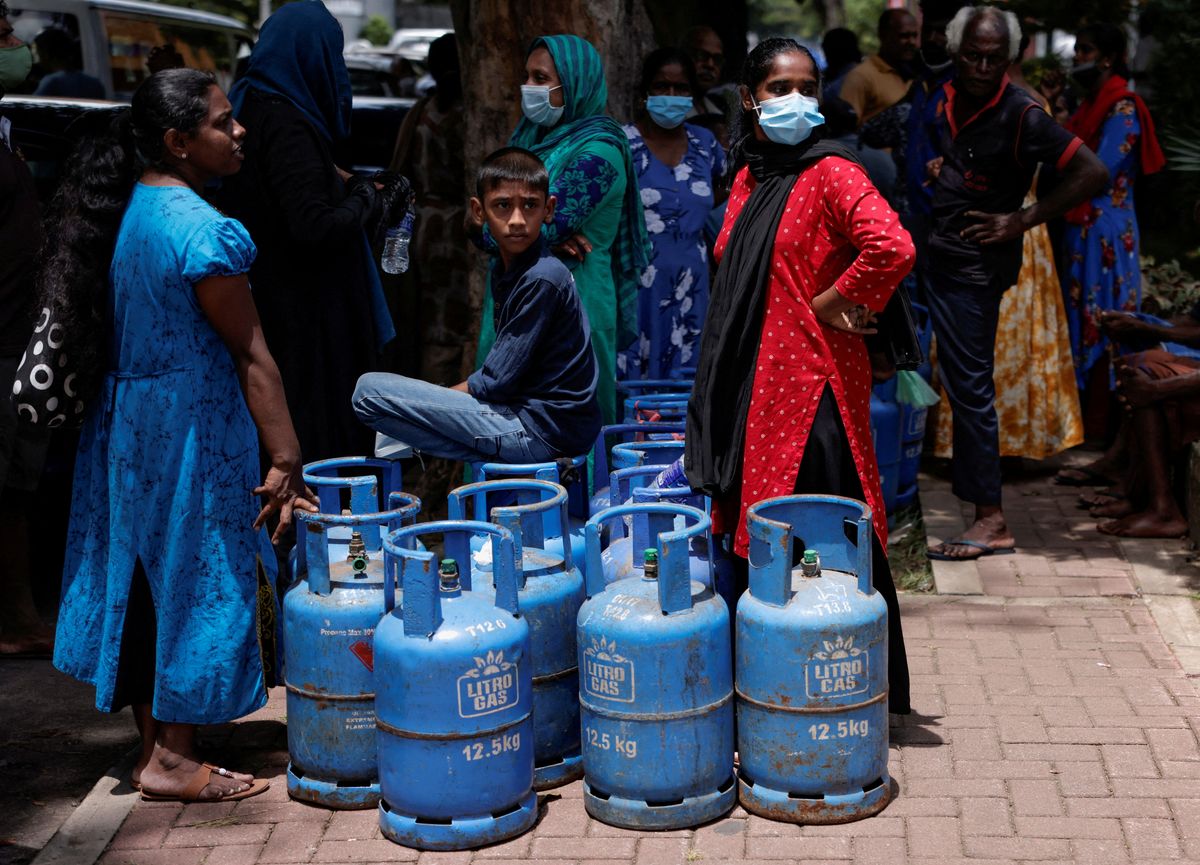Sri Lanka approves domestic debt restructuring plan for IMF bailout
Last year, Sri Lanka faced its most severe financial crisis since it gained independence from Britain back in 1948.

A few minutes every morning is all you need.
Stay up to date on the world's Headlines and Human Stories. It's fun, it's factual, it's fluff-free.
The backstory: Sri Lanka has been grappling with a handful of economic and social challenges that have really taken a toll on the country. It’s been hit with everything from the impact of COVID on its tourism-reliant economy to surging energy prices, populist tax cuts and soaring inflation.
Last year, Sri Lanka faced its most severe financial crisis since it gained independence from Britain back in 1948. It all started when its dollar reserves hit rock bottom, causing shortages of essential stuff like food, medicine and fuel. The government then put policies in place to try to reduce importing essential goods so it could reduce spending in this area and use funds to pay off its debts instead. That didn’t help with these shortages since it mostly imports its essential goods.
With that, in early 2022, people took to the streets, demanding change and pushing the then-president to flee the country and resign. And in May last year, the country couldn’t make an interest payment on its foreign debt to international lenders for the first time.
More recently: Last July, Sri Lanka elected Ranil Wickremesinghe as its new president, and, according to the IMF, things are looking up compared to before. The country has managed to reduce shortages, get rid of power cuts and, with the help of the IMF, strengthen its local currency.
Last September, Sri Lanka secured a preliminary agreement with the IMF for a US$2.9 billion bailout package. This March, the country officially entered into a four-year IMF program, signaling a significant shift. The focus now is on restructuring the nation's debts, with nine payments expected, including a substantial US$333 million upfront. But, to earn that cash, Sri Lanka needs to make some changes, like fighting corruption and inflation.
The development: Sri Lanka's Parliament has just given the green light to a domestic debt restructuring plan over the weekend, paving the way for the US$2.9 billion bailout from the IMF. The plan got the thumbs up through a parliamentary vote, with a majority of lawmakers (122 out of 225) backing the initiative. To buffer any market reactions during announcements during this time, Sri Lanka announced a five-day bank holiday starting last Thursday.
Now, let's talk about the nitty-gritty of the plan. Sri Lanka is looking to reduce government bonds held by international lenders by 30%. To ensure the safety of deposits held by national banks, it's spreading the burden of the debt between the Central Bank and superannuation funds. The IMF has also set a target for Sri Lanka to bring down its overall debt to 95% of GDP by 2032.
Key comments:
"This debt restructuring plan is essential for Sri Lanka to meet the target set by the IMF agreement to reduce debt from the current 128% of GDP to 95% of GDP by 2023," said State Minister of Finance Shehan Semasinghe to Parliament. "We are doing this while protecting banks, depositors and pensions."
"The government expects the entire process to conclude while the markets are closed during these five days," said central bank governor Nandalal Weerasinghe last week. "Local depositors are assured of the safety of their deposits and interests will not be affected."
"The debt rework may not include principle haircuts. Most likely it will be maturity extensions with a small coupon cut for only a specific pool of investors," said Udeeshan Jonas, chief strategist at equity research firm CAL Group.
”There is no equal burden sharing in this program,” said opposition leader Sajith Premadasa, calling the restructuring plan “unrealistic.”




Comments ()